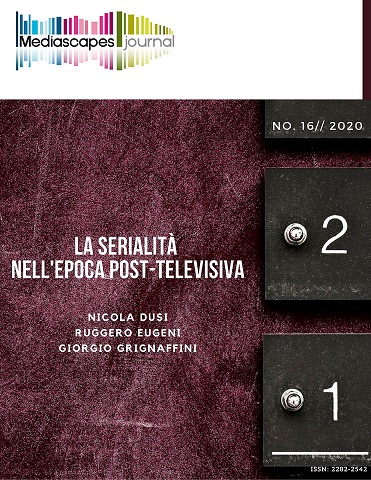Letteratura serializzata. L’adattamento interculturale e le logiche commerciali televisive: il caso Babylon Berlin
Keywords:
Narrative seriality, globalization, adaptation, transposition, tv seriesAbstract
In the last decades TV series have utilised literary sources to create their subjects, and not only for TV costume dramas. A particular example of adaptation from a literary text to TV series is Babylon Berlin produced in Germany from Volker Kutscher’s novels focused on police commissioner Gereon Rath. At the heart of the narration are not only Rath’s investigations but the attention to the novels’ historical and cultural references. The story is set in Weimar Republic between 1929 and1933 and the audiovisual format clearly recreates the locations and the entire cultural context of the time with an almost philological care. The process of adaptation is interesting not only for the inevitable differences between the two expressive forms and inherent semiotic processes, but also because it is the result of a chosen process (and project) of internazionalization of the narrative product. The series has been thought for an international market with an extremely high budget for this kind of production in Europe, more than forty millions euros. If for American Tv series these mechanisms are common, for European productions it is not so. However, these mechanisms connected to production and marketing – used also within the literary panorama with examples such as Dan Brown’s and Joel Dicker’s works – inevitably change narrative forms, even more so when an intermedial adaptation occurs. How does this cultural adaptation of the audiovisual product linked to its internazionalization change the narrative form? To which point economical and marketing dynamics determine a change in narrative forms, beginning with a serialization of the product? Which fruition of a refined and visually well-finished product like Babylon Berlin presuppose for its specific audience?
Downloads
Published
How to Cite
Issue
Section
License
Mediascapes Journal is published under a Creative Commons Attribution Licence 4.0.
With the licence CC-BY, authors retain the copyright, allowing anyone to download, reuse, re-print, modify, distribute and/or copy their contribution. The work must be properly attributed to its author. It should be also mentioned that the work has been first published by the journal Anuac.
Having published these contributions for the first time, Mediascapes Journal will have the right to publish them integrally or partially as reprints or possibly as part of a thematic issue, in both digital and printed format.
It is not necessary to ask further permissions both to author or the journal.


